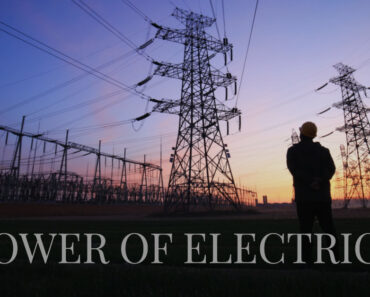Climate change’s economic implications are hard to quantify. Hurricane Harvey, which generated 125 billion dollars in damages, may not have happened or been less catastrophic without climate change.
Climate change may not have caused California’s 2018 wildfires, which cost over $150 billion.
Climate warming may not have caused the 2021 cold snap that left millions of Texas without electricity and cost the state’s economy over 130 billion dollars.
It’s clear that natural catastrophes are becoming more frequent and severe, and the causes are widely recognized.
Numerous studies across sectors have concluded that climate change caused by human carbon emissions would create serious economic turmoil, neglecting the apparent human repercussions of these natural calamities.
Extreme weather affects society’s most vulnerable.
Addressing This?
We need to fix this now, yet accelerating our fossil fuel transition is hard.
Fossil fuels power our economy, therefore not utilizing them to save it is a catch-22.
Most industries are unmotivated by intangible economic repercussions.
We need immediate economic pressure to promote the transformation.
Carbon taxes, which are directly imposed on carbon emissions, are a controversial economic strategy.
Carbon tax opposition is understandable.
Consider a basic carbon tax based on fuel carbon emissions.
How would decarbonizing fuels work?
Fuel costs will rise, making it more expensive for average people to drive to work and heat their homes.
Those who can afford new electric cars will buy them, but most people can’t, and electric car manufacturing isn’t generating enough to facilitate that move.
The poorest will suffer most.
Large-scale economic effects are harder to foresee.
Electricity rates will also be influenced.
Consumers would pay more for fossil fuel-powered systems.
Increased power and gasoline prices affect every sector worldwide.
Businesses adapting to higher overhead expenses would likely lower GDPs.
Governments must evaluate these critical challenges against future, often intangible climate change-related economic losses.
While developing such policies, there are numerous factors.
Carbon tax pricing: optimal?
They must be high enough to drive high-carbon fuels like coal out of the market without crippling the economy.
Spending Taxes
Spending revenue on what?
Should the money go back into refunds for lower-income people who would feel the squeeze or be used as a tax swap for companies to cut GDP?
Today, we’ll use two computer models and MIT researchers’ [3] predictions to answer these problems.
The US Department of Energy’s ReEDS model and MIT’s USREP model simulated the electric grid’s impacts on the US economy.
These computer models helped researchers predict how different policies would affect the electrical grid and the US economy.
Interesting results.
Two beginnings were tested.
The 2020 carbon price would be 25 or 50 dollars per ton of CO2.
How’s that?
CO2 release measurement: how?
One approach to achieve this is to charge fuels based on their carbon dioxide emissions per million btu (British Thermal Unit), which I refuse to use, so let’s convert to Joules, which is 1 gigajoule plus some change.
Coal weighs 34 kilos per gigajoule.
Maybe 2 bags of home heating coal.
Coal emits 0.1 metric tonne of CO2 per gigajoule.
A $50 carbon tax per metric tonne would cost $5 more.
Yet, natural gas releases around half the carbon dioxide that coal does, making its penalty half those of coal and giving it a substantial commercial advantage.
These studies then imposed two yearly carbon tax rises.
The Effect?
One with an annual tax increase of 1% and one of 5%.
This yields 4 possibilities.
Let’s examine these four situations.
Each scenario’s 2020–2050 power price forecasts were this.
All 4 increased electricity costs.
The first rise is fully controlled by the starting tax of 25 and 50 dollars per tonne of CO2, but prices do not grow annually despite the tax increasing by 1% or 5%.
Electricity grids adapt swiftly to new tax environments.
The most aggressive tax strategy causes a 50% price jump, which drops to 30% by 2030 and again in 2040.
The price rises are scary, but this simulated electric grid reacted well.
US energy generation prediction without taxes.
The only main drivers of change are inexpensive wind and solar generating and quick response natural gas power facilities. Coal, natural gas, and nuclear supply the bulk of the country’s energy.
Both reducing coals.
30 years with no renewable energy growth.
Under high taxes, this happens.
The electricity grid abruptly removes coal.
High-carbon electricity is unsustainable.
Natural gas and wind energy quickly replace coal power stations within a few years.
The study notes that the mix of solar and wind is sensitive to model assumptions as solar energy capacity grows.
This high-tax scenario introduces a new technology around 2040.
In this scenario, the 50 dollar carbon tax increases by 5% every year to 133 dollars per tonne of CO2 in 2040, making natural gas with direct carbon capture viable.
Direct carbon capture, which collects CO2 from the air, costs $250–600 a tonne.
It’s not cost-effective yet, but the price is predicted to reduce, and extracting carbon dioxide from gas turbine exhaust will be cheaper than capturing it after it’s diffused into the atmosphere.
If the price drops below $100 per tonne by 2040, integrating this technology with natural gas plants makes sense.
Every tonne of CO2 collected saves 33 dollars.
This scenario reduces carbon dioxide by 90% by 2050, which is good.
This graph shows that the 25 dollar tax at 5% growth outperforms the 50 dollar tax at 1% over 18 years.Emission reductions stagnate under 1% growth scenarios in our emissions estimates.
They barely balance economic growth-related emissions.
For industries to respond quickly, a 5% increase is needed.
Four possibilities killed coal.
It seems the golden figure is 30-40 dollars per tonne of carbon dioxide, and in every scenario, removing coal is what generates the significant decreases in carbon emissions, therefore we must prioritize taking it out of our energy generating mix.
What happens to the money raised?
Revenue under 4 circumstances.
With high tax high growth raising over 600 billion dollars.
It’s expensive.
How should we spend it?
It doesn’t disappear.
This research evaluated three approaches to recycle tax revenue to mitigate its negative consequences.
Lump sum rebates to carbon tax-affected households, labour income tax reductions, capital income tax reductions, and 5 hybrids of these 3 tax routes.
Direct money returns to families are the most progressive, minimizing the impact on low-income households.
Yet, direct capital tax reductions are more effective for economic maintenance.
It’s a tax swap—carbon tax revenue reduces capital taxes.
Nonetheless, it favors wealthy households.
A hybrid approach where 6-8% of the carbon tax is recycled to low-income dwellings and the remainder goes to a tax swap with capital tax sounds optimum.
This balances progressivism and economic efficiency.
Carbon taxes work, and plain fuel taxation is the simplest, but California has established cap and trade systems that restrict carbon emissions and provide firms permits.
Reduced-emission firms can sell their allowances to other companies.
Yet, tracking a company’s emissions across operations is difficult.
Companies are ready to hack these systems, as shown by Volkswagen’s pollution cheating technology in 11 million automobiles.
Fuel taxes are uncheatable.
System works.
It reduces carbon emissions, compels polluters to adjust, and fosters innovation.
The US does not have a carbon tax.
While their lobbyists argue “taxes are evil,” the fossil fuel sector nevertheless receives substantial tax subsidies.
No one wants to pay more taxes, but this tax can be introduced without raising tax revenue. Instead, it stimulates the switch to low-carbon energy, which will save us millions of dollars by decreasing climate change.






